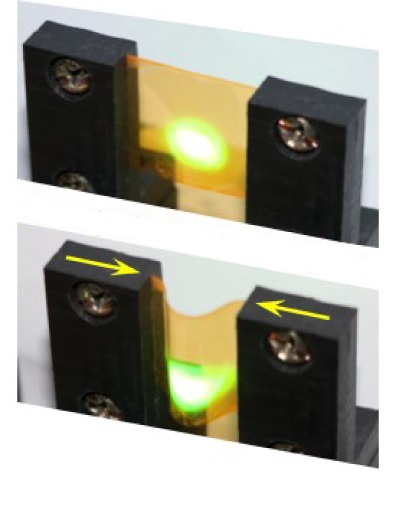Disorder is emerging as a strategy for fabricating random laser sources with very promising materials, like perovskites, for which standard laser cavities are not effective, or too expensive. We need however different fabrication protocols and technologies for reducing the laser threshold and controlling its emission. Here we demonstrate an effectively solvent-engineered method for high-quality perovskite thin films on the flexible polyimide substrate. The fractal perovskite thin films exhibit excellent optical properties at room temperature and easily achieve lasing action without any laser cavity above room temperature with a low pumping threshold. The lasing action is also observed in curved perovskite thin films on the flexible substrates. The lasing threshold can be further reduced by increasing the local curvature, which modifies the scattering strengths of the bent thin film. We also show that the curved perovskite lasers are extremely robust with respect to repeated deformations. Because of the low spatial coherence, these curved random laser devices are efficient and durable speckle-free light sources for applications in spectroscopy, bio-imaging, and illumination.
Wang et al. in ACS Nano (2019)
See also …

